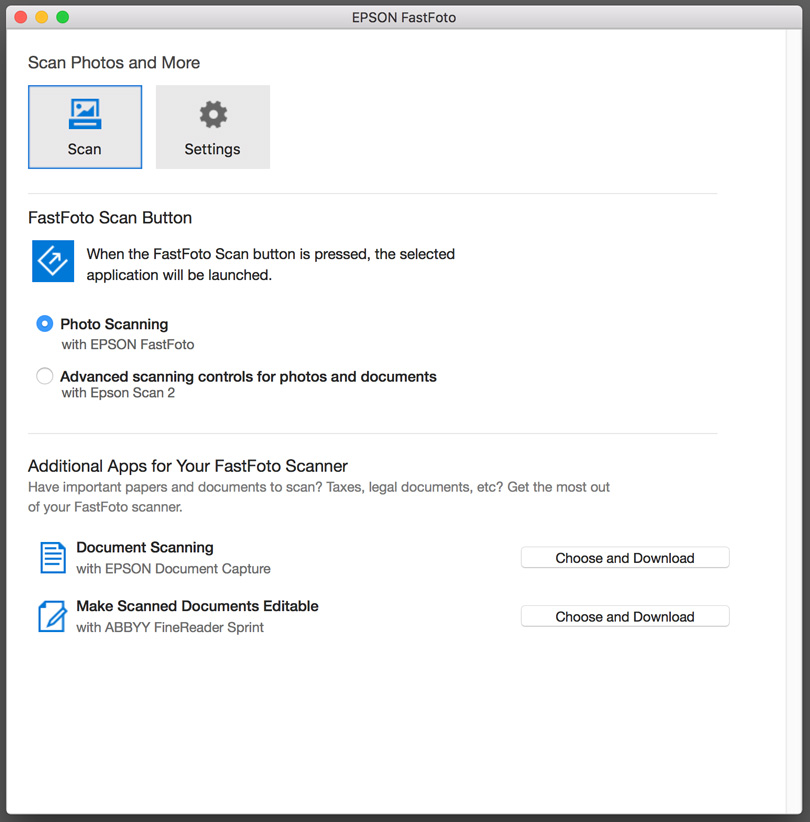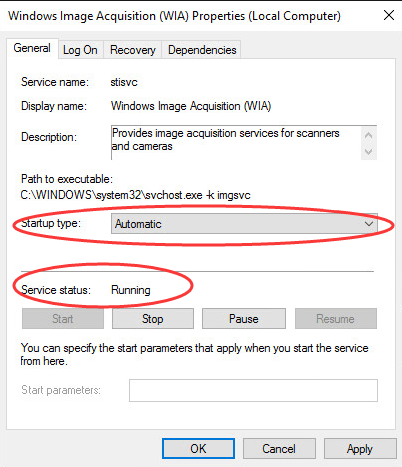Contents

This document covers the step-by-step process to scan color or black and white documents or images to PDF or an image file(s) with EPSON Scan using the GT-15000 (up to 11” x 17”), Expression 10000 XL (up to 11” x 17”), or Perfection V750 PRO (up to 9” x 11”) Epson scanners. The EPSON Scan software is the same on Macintosh and Windows, so these instructions work for both platforms.
The EPSON Scan software is the same on Macintosh and Windows, so these instructions work for both platforms. Note: If you want to scan a document or image(s), see How to Scan Documents and Images with EPSON Scan or How to Scan Using the Fujitsu Scanners. Before you get started. We recommend you use a film holder, which helps the scanning. As you can see, the Epson scanner will work as long as you need it regardless of the compatibility issue on Windows 10. Right click Epson scan on the Desktop and then open its Properties. In Epson scan Properties, under the Compatibility tab, uncheck the box of Run this program in compatibility mode. Then hit Apply and OK to save changes. Start the Epson Scan 2 program to select scan settings, scan, and save the scanned image to a file. Apr 13, 2021 EPSON Scan Free. Developed by SEIKO EPSON CORP. 3.8 (493 votes) SEIKO EPSON CORP. License type: Freeware. Review Comments (12) Questions & Answers (6) Update program.
Left to right: GT-15000 (11×17), Expression 10000 XL (11×17), Perfection V750 PRO (8.5×11).
Note: If you want to scan slides or film strips, see How to Scan Film Strips and Slides with EPSON Scan. If you are at a station with a Fujitsu scanner, see How to Scan Using the Fujitsu Scanners.

Be sure you have a flash drive, external hard drive, or other means of taking your files with you when you leave.

The answer to this question is: It depends! What are you using the image for? If you just need a digital copy to upload to the Internet (perhaps for a website or social media), you can scan on the lower end, around 300 dpi.
If you intend to print your image, you’ll want to scan it at a higher resolution, like 600 dpi. The extra detail picked up by a higher-resolution scan will be useful when printing your photos. Scanning beyond 600 dpi is not really necessary, because the scanner likely won’t pick up more detail at, for example, 1200 dpi than it would at 600 dpi.
Remember that the higher your resolution, the larger your file size is going to be. Depending on how and where you’re planning to store your digital images, this may also affect your decision.
Again, it depends what you’re going to do with them!
JPEG (or JPG) is a very popular and easily compatible file format. Most digital cameras save photos as JPEGs, and they’re the easiest format to share with others via email or social media. They are high quality, but not the absolute best. To keep file size down, a JPG is compressed, which will result in some loss of detail. If you are digitizing photos for a website or slideshow, this is probably what you want.
TIFFs are not as commonly used. They may not be recognized by all photo sharing sites, but will be usable by photo editing software. The file size is much larger because TIFFs are an uncompressed file format, meaning 100% of what you scanned is visible in the file. If you’re going to edit or print your photos, this may be the best choice.
Epson Scan 2 Software
- Lift the scanner cover.
- Make sure the scanner bed is free of dust and smudges, which can show up on your scan. If it’s dirty, ask a consultant for cleaning supplies.
- Place your document or image face-down aligned with the top-left corner of glass for the GT-15000 and Expression 10000 XL scanners or top-right corner of glass for the Perfection V750 PRO scanners.
Align your document or image with the top left corner on the GT-15000 and Expression 10000 XL scanners.
Align your document or image with the top right corner on the Perfection V750 PRO scanners.
- Lower the cover as far as possible so that your document or image lays flat on the glass. For the GT-15000 and Expression 10000 XL scanners, you can remove the cover by gently lifting upwards until the metal rods at the back are lifted out of their holders. For the Perfection V750 PRO, be sure the white backing is inserted properly in the holders on the underside of the scanner cover.
- Open up the application EPSON Scan. It’s the same on both Macintosh and Windows, so these instructions will work on either platform.
- Under “Mode,” at the top right of the window, select “Professional Mode.” This will give you expanded options for your scanning settings, which you can adjust depending on what you want to scan.
- Adjust the scan settings to your needs.
- Under the Document Type pulldown menu, select Reflective.
- Under the Auto Exposure Type pulldown menu, select Document.
- Under the Image Type pulldown menu, select 24-bit Color for a color scan, and 8-bit Grayscale if you would like to scan in black and white (selecting Black and White will scan only in black and white, with no spectrum of gray).
- Choose your resolution, which decides the quality of your scan. We recommend scanning at 150-300 dpi when turning documents into PDFs.
- Click Preview. This gives you a picture of everything in the scanner.
If the document you’re scanning is significantly smaller than the scanner bed (like a passport), or if you only want to scan a portion of the document, click and drag to create a selection box around the area you would like to scan. - Click Scan.
- In the File Save Settings window that opens, under Location, choose where you want to save your file (saving to the Desktop makes it easier to find). Under Image Format Type, choose how you want to save your file (as a PDF).
Make sure the “Show Add Page dialog after scanning” button is checked, and click OK.Step 7
- Your document will scan.
In the Add Page dialogue box that pops up, choose whether you want to save your file, edit it, or add a page. If you have multiple pages you want to add to the same PDF document, click Add a Page. You will be taken back to the preview window, and you can put the next page into the scanner. If it is the same size as the first page, there is no need to go through the preview again; just position the page on the scanner bed and click Scan, then save the file when all the pages have been added.If you have no other pages to scan, click Save. - Your file will save to the location you specified in the File Save Settings.
Steps 1-6
- Under the Document Type pulldown menu, select Reflective.
- Under the Auto Exposure Type pulldown menu, select
- Under the Image Type pulldown menu, select 24-bit Color for a color scan, and 8-bit Grayscale if you would like to scan in black and white (selecting Black and White will scan only in black and white, with no spectrum of gray).
- Choose your resolution, which decides the quality of your scan. We recommend scanning at 300-600 dpi when turning photographs into JPEGs or TIFFs.
- Click Preview. This gives you a picture of everything in the scanner.
If the photograph you’re scanning is smaller than the scanner bed, or if you only want to scan a portion of the photograph, click and drag to create a selection box around the area you would like to scan. - Click Scan.
- In the file Save Settings window that opens, under Location, choose where you want to save your file (saving to the Desktop makes it easier to find). Under Image Format Type, choose howyou want to save your file (as a JPEG or TIFF).
- Click OK. Your photograph will scan and be saved to the location you specified in the File Save Settings.

You now have a PDF of your document, or JPEGs/TIFFs of your pictures! Feel free to edit or rename any of your files – if you need help editing a picture with a program like Photoshop, ask one of our consultants. Remember to save and take your files with you by flash drive, external hard drive, self-addressed e-mail, or some other means. And don’t forget to retrieve your document or photographs from the scanner!
Epson Scan 2 Download Software
This tutorial was written by GroundWorks Consultants Nora Stone and Stephen Ratkovich.

